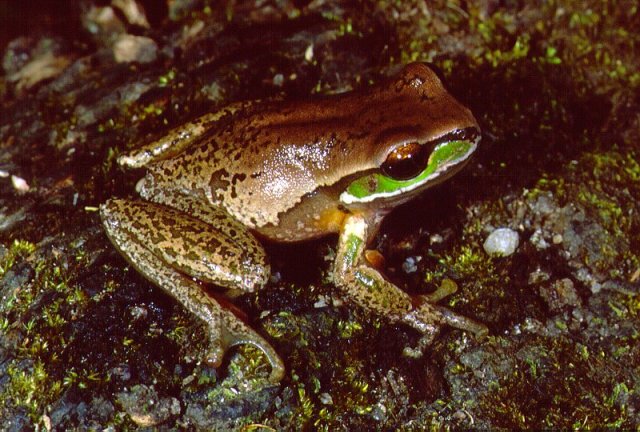|
|
WetlandUpdate October 2018Treatment Systems for Water Quality ImprovementTreatment systems, when used in conjunction with best practice land management, can improve water quality on a catchment scale. Information on best practice approaches for treatment systems for improving water quality, including conceptual models, diagrams and photos has been synthesised to assist land, water and catchment managers. This work was developed through the Queensland Wetlands Program by the Department of Agriculture and Fisheries and the Department of Environment and Science and reviewed by technical experts and regional officers. It has a current focus on treatment systems for agricultural settings, and provides a number of various system options. Site Management and RehabilitationThe management and rehabilitation of wetlands is undertaken for a wide range of reasons. What ever the reason undertaking a wetland rehabilitation project, even a small one, can be a lot of work, planning the project properly is likely to save time, money and frustration by reducing any extra unnecessary steps. The Site Management and Rehabilitation pages provide a generic approach which can be used for a range of wetland types and multiple purposes. Ross and Pioneer Catchment StoriesTo effectively manage a catchment it is important to have a collective understanding of how the catchment works. Catchment stories use map journals, integrated spatial information, photographs, animations and an informative narrative to demonstrate the features of catchments. These stories describe the location, extent and values of the Ross and Pioneer Catchments. The stories demonstrate the key features which influence water flow, including geology, topography, rainfall and run-off, natural features, human modifications and land uses. The information was compiled using the walking the landscape process, where experts systematically worked through a catchment in a facilitated workshop, incorporating diverse knowledge of the landscape, to develop catchment stories. Case Study De Moleyns LagoonDe Moleyns Lagoon is an environmentally and culturally important wetland area situated within a floodplain dominated by agriculture. It is home to a large variety of vegetation communities, including the endangered regional ecosystem Melaleuca viridiflora woodland. Local stakeholders have worked together for many years to restore and transform the site to an area which is now a valued natural habitat. Updated page for Shoalwater and Corio Bay Ramsar siteAn updated Ramsar Information Sheet (RIS) was released for the Shoalwater and Corio Bay Ramsar Site. Check out the updated page, the updated site factsheet and link to ecological character description (ECD). Updates, improvements and linksAdditional linksLink to the new Water Quality Australia Website. The Aquatic Ecosystems Toolkit Module 5: Integrated Ecosystem Condition Assessmentis now available on the Australian Government website. The Environmental Economic Accounting - Strategy and Action Plan sets out how a common national approach to the implementation of the United Nations System of Environmental-Economic Accounting will provide coherent and integrated data for decision making by governments, business and the community. More projects from Moreton Bay Regional Council, the Community Sustainability Action Grants program, Ipswich City Council and Greening Australia have also been added to the Wetland projects search tool. WetlandInfo has a new domain! Since the Machinery of Government changes in 2017, the previous Queensland Department of Environment and Heritage became the Queensland Department of Environment and Science. This change in structure and name has been reflected now in the domain name for WetlandInfo. Now is the time to update your bookmarks and links from https://wetlandinfo.ehp.qld.gov.au/wetlands/ to https://wetlandinfo.des.qld.gov.au/wetlands/ WetlandUpdateThe WetlandUpdate is a regular bulletin sent to subscribers to provide them with the latest WetlandInfo resources and tools, as well as case studies, video information and new project fact sheets. View all of the previous WetlandUpdates WetlandInfo feedback and improvementsContact us via email for feedback, information or questions about wetlands. WetlandInfo feature animalOur October feature animal is Litoria subglandulosa, also known as the New England Tree Frog. Most populations of the New England Tree Frog were only discovered from the 1990s onward, so there is little in the way of historical records for the species. What is known, though, is that this species predominantly lives at the very southern extent of Queensland, east of the Great Dividing Range, in rainforests near slow-flowing and small streams. The frogs are known to breed throughout spring and, interestingly, the tadpoles have tentacles around their mouths, as opposed to a horny beak. For more information see:
WetlandInfo updates this section regularly, so stay tuned for more! Last updated: 5 October 2018 This page should be cited as: Department of Environment, Science and Innovation, Queensland (2018) WetlandUpdate October 2018, WetlandInfo website, accessed 18 March 2024. Available at: https://wetlandinfo.des.qld.gov.au/wetlands/resources/publications/latest-news/2018-10-05.html |

 — Department of Environment, Science and Innovation
— Department of Environment, Science and Innovation



